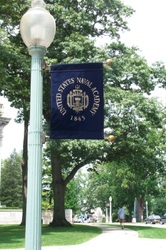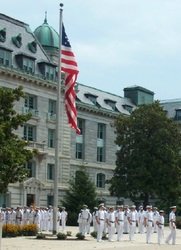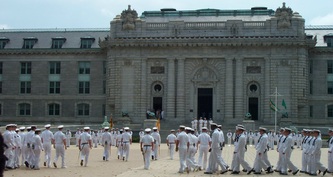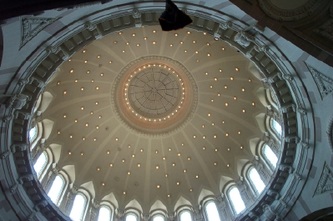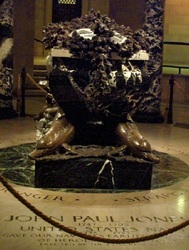
Annapolis Harbor during thunderstorm
We finally made it up to Baltimore’s Inner Harbor as July came to an end, after spending most of the past 2 weeks in and near Annapolis, MD. However, as the sun sets on July, we are several hundred miles away from Baltimore, driving to our daughter’s home in southern Virginia. More about that later. The good news is that we’ve had 2 weeks of uneventful engine starts, thanks to some excellent work by another skilled marine engine mechanic, Karl. Even better news is that we are celebrating the arrival of our 2nd grandson, Jayden Kenneth Dieter on July 29th.
Engine woes – behind us?
As we enjoyed the familiar surroundings of the Liberty Marina in Edgewater, including reconnecting with friends there, we hooked up with Karl, of Karl’s Marine Engine Services, Inc. who is a well-respected Yanmar engine mechanic. He spent several hours over 2 days, completing a number of projects on David’s list of more complex engine maintenance items. The most important of these (if you remember from the last log entry) was installing a relay on the starter to solve our engine starting problems. That was actually the simplest of the items he had to do, and it worked great. We haven’t had a problem since. (Knock wood.)
One of the items that was supposed to be simple was replacing and upgrading the raw water intake hoses for the engine from the original unreinforced lines to ones that were reinforced (and therefore less likely to collapse under pressure). This is one of those times, David was thanking his lucky stars that he didn’t try this one by himself. While removing the old hoses, the metal coupling to which they attached broke off due to galvanic corrosion. This meant that, in order to replace the coupling, the raw water thru-hull valve would have to be removed as well. (For those who don’t understand why this would alarm anybody, you need to think about the word “thru-hull”. That means the deep blue sea is on the other side of that hole, waiting to come through the hull (get it?) when the valve is open --- or not there. If you remove the valve that closes the thru-hull, there’s nothing keeping all that water out.) At any rate, Karl was unfazed at the panicky looks on both of our faces. He simply asked for a wooden plug to use in the hole. (Oh, yeah! We knew we bought those for a good reason.) After popping out the valve and (quickly) tapping in the plug, he confirmed that valve was fine, so that all that had to be replaced was the original coupling that had broken. The rest of this repair proceeded (thankfully) without any more surprises.
Karl also replaced the fuel vent hose (which provides a way for air to escape when the fuel tank is filled) with a longer hose to prevent the crimping that caught us by surprise on a hot summer day last year. The crimping had blocked the air flow, creating a vacuum in the fuel line, which (of course) kept the engine from starting. We had to bleed the fuel line in order to get it started. As the summer was heating up, David expected it was only a matter of time before this happened again. On our particular Beneteau model, accessing this hose is through a particularly awkward access panel. Since Cathy had been the stuckee during last year’s episode (doing the “un-crimping”), she was glad to let Karl have the honors this time. (He also pointed out that by removing another panel, the access was much less awkward.)
We had suspected that, since our fuel gauge always read full, it wasn’t working. So, Karl removed the fuel gauge sensor to check it, confirming that it actually was working fine, meaning that the tank was always full. He suggested we were filling the tank a little too often. Having Karl around to help with this task was well appreciated, since re-sealing the opening in the fuel tank was tricky. (The diesel tank is right under our bed, so we weren’t too keen to have diesel fuel leaking around the opening.)
The nastiest job that we had Karl do was to change the antifreeze. Those who have done this on a car are probably thinking, what’s the big deal? Well, if you think about doing this on a car, you usually go underneath the car and drain it out a hole in the bottom of the radiator. That’s not too easy to do on a boat in the water. You essentially have to let the antifreeze pour out into the bilge compartment beneath it. Then you suck it up into large buckets to haul off the boat. Since this is not “bio-degradable” stuff, but very toxic, the waste antifreeze has to be hauled to a waste disposal site. This was not a job that we would have managed well on our, with our tiny shop-vac on board, but at least we know how to do it, given the right circumstances.
The biggest advantage of hiring Karl for this work is that he not only made excellent repairs, he took time to explain the things he was doing and let David (and, to a lesser extent, Cathy) watch and help. This will allow us to perform similar maintenance and repairs on our own in the future.
Hand over some of those wooden plugs!
Kindness of strangers
Our week at Liberty (which is on the busy Rt. 2 highway north of Edgewater, MD) forced us to comprehend and use the greater Annapolis bus system in order to purchase a replacement pair of glasses for Cathy, and to visit our favorite consignment store, Bacon.
The first thing we learned was that the number of people who have no clue about the bus routes and schedules (or why you would want to know about it) greatly outnumbers those who are well-informed on the topic.
The second thing we learned is how important it is to know your bus schedule, especially in the heat of late July in Annapolis.
We had researched the buses that would service Liberty that would get us to the mall, where we had the most choices for eyeglasses. These were commuter buses that only ran Monday – Friday, which meant that we had to scramble to catch one shortly after we arrived on Friday. We were told that the buses ran once an hour. So, when we missed the 12:45 bus, we started our hike up to the bus stop, aiming for the 1:45 bus. However, there was no bus stop sign on our side of the highway anywhere near where we had been told it would be. Just green grass and weeds. Our confidence now being shaken, we decided to walk up the highway “a bit” to find the next bus stop. After walking in the hot sun for “a bit”, we asked a couple of local businesses about the nearest bus stop. We received a mixture of blank stares (“what bus?”) and directions taking us a couple of miles into town. We decided to move on. The next person we stopped was equally unhelpful, but by now, we were so hot and sweaty, they were probably just trying to distance themselves from us. After another “bit” of walking, we approached a cross-street, where a car had just stopped before turning. We asked the same question. This time the woman driving took a look at our bedraggled appearance and told us she would take us to the mall. Angels come in all shapes and forms -- in this case, driving an air conditioned minivan.
Upon arriving at the mall, we got a bus schedule from the information desk (they couldn’t give us one, but we could look at it) and determined the route to get back. No one was quite sure when the buses stopped running, though. Sigh! However, we managed to get back to the marina successfully with the schedule information we received. The bus drivers were very helpful, as well. When we asked the commuter bus driver about where to catch the northbound bus when headed into town, he explained that the sign wasn’t there, but that we just needed stand on the northbound side of road opposite the sign on the southbound side, and the bus driver would stop. Simple enough. Right?
Our next attempt to catch the bus wasn’t until the following Monday. We were now confident and armed with information. No problems now. We trooped up to the busstop in time for the 9:45am bus. We stood in our patch of grass and waited. And waited. And waited. When nearly 40 minutes had passed, we tried to decide just how late a bus could be. We were beginning to feel foolish standing in the weeds at the side of a 4-lane highway, but we kept it up a little longer. And a little bit more. And finally, at about 10:45, a bus arrived, which actually . . . stopped. We asked the driver about the “missing” 9:45 bus. He said simply that the northbound bus ran every 2 hours. Only the southbound bus ran every hour. Ohh. He gave us his only bus schedule, which we accepted like it was a piece of gold. This was just a short trip down to the harbor for some sightseeing and a trip to Fawcett’s Marine. It was actually just an excuse to get into some air conditioning, which worked – until the return trip.
This led to our third lesson regarding mass transit, which is that those who rely on the Annapolis bus system for their transportation are not the well-connected or influential, which directly correlates to the amount of investment in this infrastructure.
We hadn’t quite mastered the intricacies of the bus schedule, so having missed the most recent city bus to the transfer point, we decided to simply walk there from downtown. On the map, it looked like a short distance. We missed those little words, “not drawn to scale”. This was the hottest day of the summer so far, so we arrived at the transfer point willing to do anything to get out of the heat. It was still ½ hour until the commuter bus to Edgewater would arrive, and the transfer point is just a parking lot in the hot sun. So, in our infinite wisdom, we thought we would just ride a city bus for a half hour so we could cool off in the air conditioning.
Not a good plan.
What we discovered is that only 1 or 2 of the city buses had working air conditioning. While this was an inconvenience for us, it was a daily grind for the commuters in their work uniforms, the mothers carrying babies, and worst of all, the bus drivers confined to these hot boxes all day in the relentless heat and humidity. We couldn’t believe it. Luckily, most of the commuter buses, servicing the towns outside of Annapolis, were air conditioned. When ours arrived early, we scrambled aboard in grateful appreciation for the invention of air conditioning and the promptness of the driver.
To say that America is not a friend of mass transit would be a vast understatement. The past 2 weeks allowed us to experience the effects of this lack of support and investment in one corner of the country first hand. It also allowed us to experience the grace and helpfulness of fellow travelers and workers in the system despite some difficult conditions.
Kindness of friends
We enjoyed the opportunity to re-connect with some friends at Liberty Marina who live aboard their boats there. Dan and Regina even let us borrow their car twice to do some grocery shopping. This was a tremendous help, given the previously described bus situation. Getting to the grocery store, and more importantly, getting cold stuff back still cold, would be particularly tricky as the temperatures stayed in the mid-90’s.
We took one day to travel into DC, enjoying lunch with David’s former co-workers at the Corporation for National and Community Service.
One of Cathy’s former co-workers, Katie, along with her husband, Chris, joined us while we were on a mooring in Annapolis harbor. We got to enjoy the live music from Pusser’s Landing Restaurant and the activity in the Annapolis harbor over dinner on the boat. It was fun.
Engine woes – behind us?
As we enjoyed the familiar surroundings of the Liberty Marina in Edgewater, including reconnecting with friends there, we hooked up with Karl, of Karl’s Marine Engine Services, Inc. who is a well-respected Yanmar engine mechanic. He spent several hours over 2 days, completing a number of projects on David’s list of more complex engine maintenance items. The most important of these (if you remember from the last log entry) was installing a relay on the starter to solve our engine starting problems. That was actually the simplest of the items he had to do, and it worked great. We haven’t had a problem since. (Knock wood.)
One of the items that was supposed to be simple was replacing and upgrading the raw water intake hoses for the engine from the original unreinforced lines to ones that were reinforced (and therefore less likely to collapse under pressure). This is one of those times, David was thanking his lucky stars that he didn’t try this one by himself. While removing the old hoses, the metal coupling to which they attached broke off due to galvanic corrosion. This meant that, in order to replace the coupling, the raw water thru-hull valve would have to be removed as well. (For those who don’t understand why this would alarm anybody, you need to think about the word “thru-hull”. That means the deep blue sea is on the other side of that hole, waiting to come through the hull (get it?) when the valve is open --- or not there. If you remove the valve that closes the thru-hull, there’s nothing keeping all that water out.) At any rate, Karl was unfazed at the panicky looks on both of our faces. He simply asked for a wooden plug to use in the hole. (Oh, yeah! We knew we bought those for a good reason.) After popping out the valve and (quickly) tapping in the plug, he confirmed that valve was fine, so that all that had to be replaced was the original coupling that had broken. The rest of this repair proceeded (thankfully) without any more surprises.
Karl also replaced the fuel vent hose (which provides a way for air to escape when the fuel tank is filled) with a longer hose to prevent the crimping that caught us by surprise on a hot summer day last year. The crimping had blocked the air flow, creating a vacuum in the fuel line, which (of course) kept the engine from starting. We had to bleed the fuel line in order to get it started. As the summer was heating up, David expected it was only a matter of time before this happened again. On our particular Beneteau model, accessing this hose is through a particularly awkward access panel. Since Cathy had been the stuckee during last year’s episode (doing the “un-crimping”), she was glad to let Karl have the honors this time. (He also pointed out that by removing another panel, the access was much less awkward.)
We had suspected that, since our fuel gauge always read full, it wasn’t working. So, Karl removed the fuel gauge sensor to check it, confirming that it actually was working fine, meaning that the tank was always full. He suggested we were filling the tank a little too often. Having Karl around to help with this task was well appreciated, since re-sealing the opening in the fuel tank was tricky. (The diesel tank is right under our bed, so we weren’t too keen to have diesel fuel leaking around the opening.)
The nastiest job that we had Karl do was to change the antifreeze. Those who have done this on a car are probably thinking, what’s the big deal? Well, if you think about doing this on a car, you usually go underneath the car and drain it out a hole in the bottom of the radiator. That’s not too easy to do on a boat in the water. You essentially have to let the antifreeze pour out into the bilge compartment beneath it. Then you suck it up into large buckets to haul off the boat. Since this is not “bio-degradable” stuff, but very toxic, the waste antifreeze has to be hauled to a waste disposal site. This was not a job that we would have managed well on our, with our tiny shop-vac on board, but at least we know how to do it, given the right circumstances.
The biggest advantage of hiring Karl for this work is that he not only made excellent repairs, he took time to explain the things he was doing and let David (and, to a lesser extent, Cathy) watch and help. This will allow us to perform similar maintenance and repairs on our own in the future.
Hand over some of those wooden plugs!
Kindness of strangers
Our week at Liberty (which is on the busy Rt. 2 highway north of Edgewater, MD) forced us to comprehend and use the greater Annapolis bus system in order to purchase a replacement pair of glasses for Cathy, and to visit our favorite consignment store, Bacon.
The first thing we learned was that the number of people who have no clue about the bus routes and schedules (or why you would want to know about it) greatly outnumbers those who are well-informed on the topic.
The second thing we learned is how important it is to know your bus schedule, especially in the heat of late July in Annapolis.
We had researched the buses that would service Liberty that would get us to the mall, where we had the most choices for eyeglasses. These were commuter buses that only ran Monday – Friday, which meant that we had to scramble to catch one shortly after we arrived on Friday. We were told that the buses ran once an hour. So, when we missed the 12:45 bus, we started our hike up to the bus stop, aiming for the 1:45 bus. However, there was no bus stop sign on our side of the highway anywhere near where we had been told it would be. Just green grass and weeds. Our confidence now being shaken, we decided to walk up the highway “a bit” to find the next bus stop. After walking in the hot sun for “a bit”, we asked a couple of local businesses about the nearest bus stop. We received a mixture of blank stares (“what bus?”) and directions taking us a couple of miles into town. We decided to move on. The next person we stopped was equally unhelpful, but by now, we were so hot and sweaty, they were probably just trying to distance themselves from us. After another “bit” of walking, we approached a cross-street, where a car had just stopped before turning. We asked the same question. This time the woman driving took a look at our bedraggled appearance and told us she would take us to the mall. Angels come in all shapes and forms -- in this case, driving an air conditioned minivan.
Upon arriving at the mall, we got a bus schedule from the information desk (they couldn’t give us one, but we could look at it) and determined the route to get back. No one was quite sure when the buses stopped running, though. Sigh! However, we managed to get back to the marina successfully with the schedule information we received. The bus drivers were very helpful, as well. When we asked the commuter bus driver about where to catch the northbound bus when headed into town, he explained that the sign wasn’t there, but that we just needed stand on the northbound side of road opposite the sign on the southbound side, and the bus driver would stop. Simple enough. Right?
Our next attempt to catch the bus wasn’t until the following Monday. We were now confident and armed with information. No problems now. We trooped up to the busstop in time for the 9:45am bus. We stood in our patch of grass and waited. And waited. And waited. When nearly 40 minutes had passed, we tried to decide just how late a bus could be. We were beginning to feel foolish standing in the weeds at the side of a 4-lane highway, but we kept it up a little longer. And a little bit more. And finally, at about 10:45, a bus arrived, which actually . . . stopped. We asked the driver about the “missing” 9:45 bus. He said simply that the northbound bus ran every 2 hours. Only the southbound bus ran every hour. Ohh. He gave us his only bus schedule, which we accepted like it was a piece of gold. This was just a short trip down to the harbor for some sightseeing and a trip to Fawcett’s Marine. It was actually just an excuse to get into some air conditioning, which worked – until the return trip.
This led to our third lesson regarding mass transit, which is that those who rely on the Annapolis bus system for their transportation are not the well-connected or influential, which directly correlates to the amount of investment in this infrastructure.
We hadn’t quite mastered the intricacies of the bus schedule, so having missed the most recent city bus to the transfer point, we decided to simply walk there from downtown. On the map, it looked like a short distance. We missed those little words, “not drawn to scale”. This was the hottest day of the summer so far, so we arrived at the transfer point willing to do anything to get out of the heat. It was still ½ hour until the commuter bus to Edgewater would arrive, and the transfer point is just a parking lot in the hot sun. So, in our infinite wisdom, we thought we would just ride a city bus for a half hour so we could cool off in the air conditioning.
Not a good plan.
What we discovered is that only 1 or 2 of the city buses had working air conditioning. While this was an inconvenience for us, it was a daily grind for the commuters in their work uniforms, the mothers carrying babies, and worst of all, the bus drivers confined to these hot boxes all day in the relentless heat and humidity. We couldn’t believe it. Luckily, most of the commuter buses, servicing the towns outside of Annapolis, were air conditioned. When ours arrived early, we scrambled aboard in grateful appreciation for the invention of air conditioning and the promptness of the driver.
To say that America is not a friend of mass transit would be a vast understatement. The past 2 weeks allowed us to experience the effects of this lack of support and investment in one corner of the country first hand. It also allowed us to experience the grace and helpfulness of fellow travelers and workers in the system despite some difficult conditions.
Kindness of friends
We enjoyed the opportunity to re-connect with some friends at Liberty Marina who live aboard their boats there. Dan and Regina even let us borrow their car twice to do some grocery shopping. This was a tremendous help, given the previously described bus situation. Getting to the grocery store, and more importantly, getting cold stuff back still cold, would be particularly tricky as the temperatures stayed in the mid-90’s.
We took one day to travel into DC, enjoying lunch with David’s former co-workers at the Corporation for National and Community Service.
One of Cathy’s former co-workers, Katie, along with her husband, Chris, joined us while we were on a mooring in Annapolis harbor. We got to enjoy the live music from Pusser’s Landing Restaurant and the activity in the Annapolis harbor over dinner on the boat. It was fun.
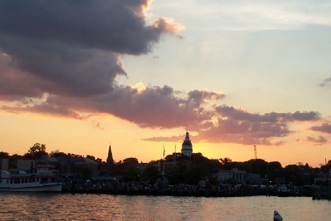
Annapolis skyline at sunset from mooring
Touring Annapolis
After leaving Liberty, we spent several nights on a mooring ball in Annapolis harbor. This was a great way to experience Annapolis, which gave us a little more time to explore the city. We enjoyed a service at the US Naval Academy chapel and got to see the plebe’s practicing the “formation”, where the cadets assembled by unit in a large courtyard and then marched into the dining hall, accompanied by the academy band. We took a tour of the campus, which is a beautiful setting by the water. Something tells me the plebe’s didn’t have a lot of time to reflect on the beautiful setting, since we frequently awoke to a chorus of hundreds of voices counting out exercises on the playing fields near our mooring in the harbor as the sun rose. Once or twice this followed similar sounds from late the night before.
One day we stumbled across an interesting museum about the African American experience in Annapolis and Chesapeake region over the course of 350 years. It was called the Banneker-Douglas Museum, and it was tucked away in a former church building on Franklin Street. This gave a rich picture of a community that flourished in the surrounding blocks of downtown Annapolis before the pressures of development pushed the residences out of the area. It then put this in the context of the history of the African American presence in the region.
After leaving Liberty, we spent several nights on a mooring ball in Annapolis harbor. This was a great way to experience Annapolis, which gave us a little more time to explore the city. We enjoyed a service at the US Naval Academy chapel and got to see the plebe’s practicing the “formation”, where the cadets assembled by unit in a large courtyard and then marched into the dining hall, accompanied by the academy band. We took a tour of the campus, which is a beautiful setting by the water. Something tells me the plebe’s didn’t have a lot of time to reflect on the beautiful setting, since we frequently awoke to a chorus of hundreds of voices counting out exercises on the playing fields near our mooring in the harbor as the sun rose. Once or twice this followed similar sounds from late the night before.
One day we stumbled across an interesting museum about the African American experience in Annapolis and Chesapeake region over the course of 350 years. It was called the Banneker-Douglas Museum, and it was tucked away in a former church building on Franklin Street. This gave a rich picture of a community that flourished in the surrounding blocks of downtown Annapolis before the pressures of development pushed the residences out of the area. It then put this in the context of the history of the African American presence in the region.
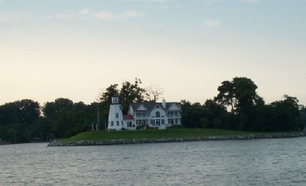
Dobbins Island Anchorage
North of the Bay Bridge
We went north of the Bay Bridge for the first time (in our current boat) for a 2 day trip to the Magothy River. We anchored in a popular anchorage north of Dobbins Island. We were far enough north that the jelly fish population had virtually disappeared, so we braved the water for the first time. It wasn’t all fun, though. We used our swim to clean the hull. Of course it’s a lot cooler doing from the water than up on deck.
We were actually anchored between 2 islands. Dobbins is just an uninhabited strip of land with a nice little beach. On the other side of the anchorage is Little Island, which was only big enough for a single house, but one that managed to include a lighthouse tower in its architecture.
Where to now?\
So, why are we on our way to VA? Well, our mail caught up to us on the last day of July and had some pressing correspondence that had a combination of urgency and complexity that required us to visit our daughter’s house (and our records) in VA. It also gave us the opportunity to sneak in a surprise trip to Rochester to visit our new grandson and his family. So, after that, we plan to enjoy Baltimore for a few days, and then its back to Liberty. Our daughter is getting married in a couple of weeks and we plan to leave the boat there while we join her and her fiance for their special day.
We went north of the Bay Bridge for the first time (in our current boat) for a 2 day trip to the Magothy River. We anchored in a popular anchorage north of Dobbins Island. We were far enough north that the jelly fish population had virtually disappeared, so we braved the water for the first time. It wasn’t all fun, though. We used our swim to clean the hull. Of course it’s a lot cooler doing from the water than up on deck.
We were actually anchored between 2 islands. Dobbins is just an uninhabited strip of land with a nice little beach. On the other side of the anchorage is Little Island, which was only big enough for a single house, but one that managed to include a lighthouse tower in its architecture.
Where to now?\
So, why are we on our way to VA? Well, our mail caught up to us on the last day of July and had some pressing correspondence that had a combination of urgency and complexity that required us to visit our daughter’s house (and our records) in VA. It also gave us the opportunity to sneak in a surprise trip to Rochester to visit our new grandson and his family. So, after that, we plan to enjoy Baltimore for a few days, and then its back to Liberty. Our daughter is getting married in a couple of weeks and we plan to leave the boat there while we join her and her fiance for their special day.
